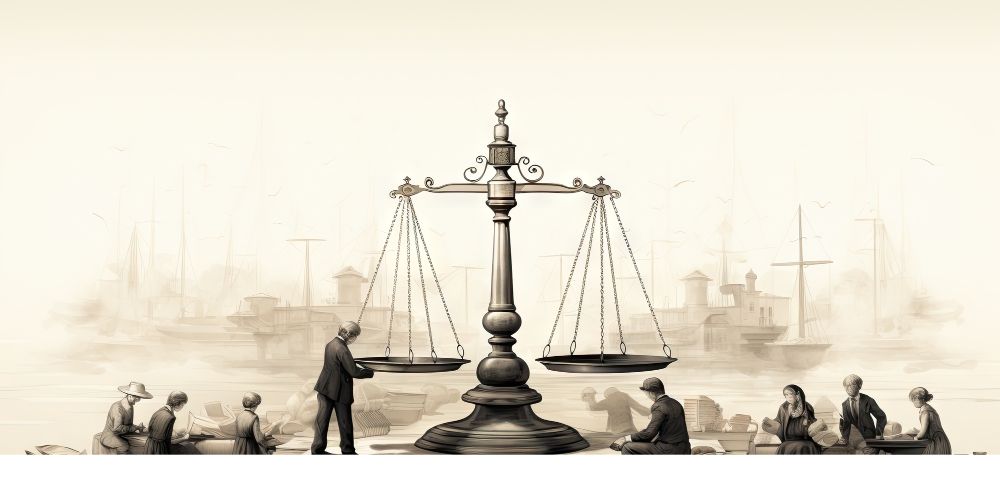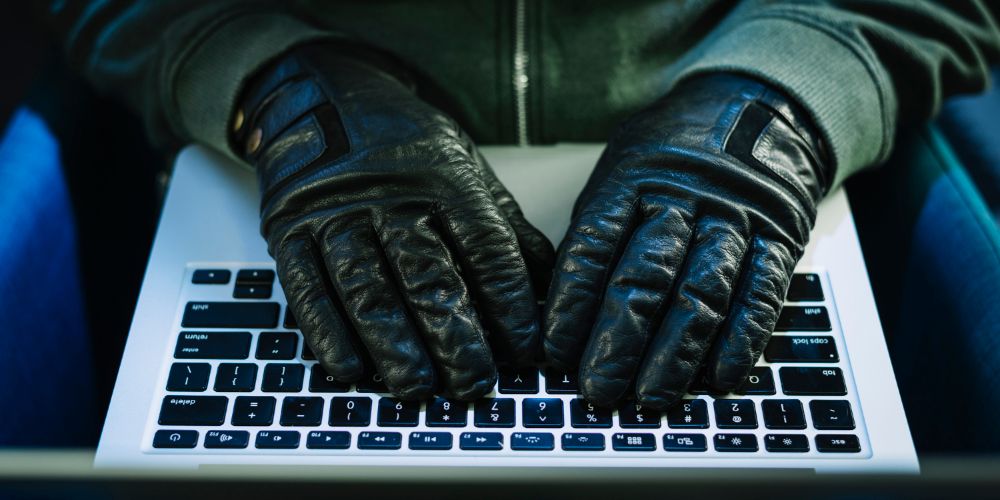According to the Blacks’ Law Dictionary, finance is the business aspect that is concerned with the management of money, credit, banking, and investments. Financial inclusion by extrapolation thus means making all the aspects of finance available to every legal person. In ordinary parlance, financial inclusion refers to the ability of individuals and businesses to access useful and affordable financial products and services that meet their needs in facilitating transactions, payments, savings, credit, and insurance that are delivered in a responsible and sustainable way. When addressing refugee financial inclusion, one refers to the ability of refugees to access transaction accounts with a financial institution, micro-finance institution or a digital or electronic instrument for purposes of storing, keeping, sending, and receiving money.
Financial inclusion encompasses various aspects, such as making financial products and services affordable and accessible to low-income earners, expanding financial institutions and service providers to marginalised or rural areas, providing relevant or legal identity documentation to the banking population, creating a data source, and improving literary or financial skills to combat lack of trust in the financial service providers. With that in mind, this article seeks to address the problems impacting refugees’ financial inclusion in Kenya.
Background to Kenya’s Financial Inclusion Policy
Kenya is on the verge of creating an all-inclusive, knowledge-based economy and has been hailed as one of Africa’s leading countries on financial inclusion with a robust policy to combat poverty and increase opportunities for investments for the disaggregated populations. The Kenya National Payments System Vision and Strategy 2025 makes inclusiveness one of its top priorities. The aim is to boost shared prosperity for the Kenyan people. According to the Central Bank of Kenya (CBK) 2021 FinAccess Report, Kenya’s household financial inclusion rate stood at approximately eighty three percent (83%).
Despite such a robust national financial inclusion policy and strategy, it can be argued that refugees in Kenya have been deliberately excluded from the benefits of the policy due to a discriminatory regulatory framework.
Exclusion of Refugees from Financial Access
Consumers are classified as financially excluded if they lack access to any formal or informal financial products or services. Generally, the universal factors that influence financial inclusion or exclusion include education, wealth, access to livelihoods, urban proximity, and cultural dynamics, such as gender biases or prejudices. All these factors contribute to the overall financial exclusion of refugees in one way or the other. Nonetheless, they are not the biggest threats to refugee financial inclusion in Kenya.
The financial service sector is the most important part of any economy, as it facilitates investments, provides access to capital, and helps manage financial risks, which drive economic growth. In this regard, the sector is heavily regulated to ensure consumer protection as well as a smooth, efficient and inclusive financial service ecosystem. Unfortunately, Kenya’s financial regulatory system excludes refugees from accessing financial services and products. For instance, the requirement under section 45 of the Proceeds of Crime and Anti-Money Laundering Act, 2009 (POCAMLA) which obligates providers of financial products and services to verify the identity of their customers does not include a Refugee Identification Document (Refugee ID) as a transactional document for banking purposes.
Further, the Proceeds of Crime and Anti-Money Laundering Regulations, 2013 (the Regulations), explicitly state at regulation 13, that for purposes of section 45 (1) of POCAMLA, a financial or reporting institution shall not enter a business relationship with a customer unless such a customer has a personal identification number (PIN) issued by Kenya Revenue Authority (KRA). However, a KRA PIN is not ordinarily issued to refugees unless they demonstrate exceptional circumstances that would warrant them to be issued with a KRA PIN. This difficulty effectively bars refugees from operating personal bank accounts.
Second, regulation 7 of the CBK E-Money Regulations, 2013 (the CBK E-Money Regulations) stipulates that all e-money issuers shall ensure that they and their agents comply with the applicable provisions of the POCAMLA and the Regulations. Although opening a mobile money account does not require the production of a KRA PIN, the mobile money operators such as Safaricom and Airtel are reporting institutions for the purposes of POCAMLA. In compliance with the CBK E-Money Regulations, Safaricom promulgated the M-Pesa Customer Terms and Conditions which do not include a Refugee ID as part of the required identity documentation for purposes of Account Opening and Maintenance. By implication, Safaricom does not open M-Pesa accounts for refugees.
The immediate former Governor of the CBK, Dr. Patrick Njoroge is on record that an ID is the most important tool and the first step toward financial inclusion. Thus, lacking one effectively prevents individuals from financial access. In the case of refugees, excluding a Refugee ID as a transactional document appears to discriminate against them. Equally, Refugee IDs expire every five (5) years, and it takes up to three (3) years to renew them. This bureaucratic hindrance also contributes to refugee financial exclusion.
Aside from exclusionary regulatory policies, refugees are highly affected by universal factors that limit financial inclusion. For instance, Kenya’s refugee encampment policy places refugee camps at the periphery of the country. These places are very remote and do not have on-site providers of financial services and products. In the same vein, the refugee camps are plagued with lack of or limited education opportunities. It is also difficult for refugees to access the labour market and scarce business activities contributes to poor or lack of livelihoods leading to low wealth indices amongst refugees. All these factors contribute to low levels of financial access for refugees.
The Refugees Act, 2021
Article 27 (1) of the Constitution of Kenya, 2010 (the Constitution) provides that everyone is equal before the law and has the right to equal protection and equal benefit of the law, which extends to the full enjoyment of all rights and fundamental freedoms. In essence, the supreme law of the land guarantees that both refugees and citizens alike enjoy equal protection and benefit of the law. While the financial regulatory laws arguably disadvantage refugees by excluding them from financial access, Article 27 (4) of the Constitution prohibits the State from enacting laws that are unjust or discriminatory on any grounds, including social origin or status, as it is the case for refugees.
It is in this context that the Refugees Act, 2021 (the Act) was passed into law with the intention of setting up a legal, social, and economic ecosystem where refugees could become self-reliant and contribute to the economic development of Kenya. To this end, section 28 (4) of the Act provides that refugees shall be enabled to contribute to the economic and social development of Kenya by facilitating access to, and issuance of, the required documentation at both levels of Government. Equally, section 28(5) of the Act grants refugees the right to engage individually or in a group in gainful employment or enterprise or to practice a trade or profession where they are duly qualified.
In addition, section 28 (7) of the Act elevates the status of a Refugee ID by granting it, at the very least, a status similar to that of the Foreign Certificate issued under section 56 (2) of the Citizenship and Immigration Act, 2011 for purposes of meeting legal obligations, receiving or rendering services countrywide. This means that refugees are entitled to access banking services, KRA PINs, mobile money registration, and e-Citizen services using their Refugee IDs, without the need to provide further supporting documentation.
By Legal Notice No. 143 of 2023, pursuant to section 28 (7) of the Act as read together with section 56 (2) of the Kenya Citizenship and Immigration Act, the Cabinet Secretary for Interior and National Administration declared the Refugee ID alongside other refugee identification documents as valid and proper documents for purposes of acquiring services provided by the Government of Kenya. Similarly, Regulation 29 (1) of The Refugees (General) Regulations 2024 converts the Refugee ID into a Refugee Certificate, specifying a format that aligns with Kenya’s system of issuing Identification Documents. The foregoing notwithstanding, the effectiveness of the Act may be undermined unless its provisions are equally integrated into the existing laws that govern the financial ecosystems.
Recommendations
The following recommendations ought to be taken into consideration to harmonise the financial laws with the Refugees Act, 2021 to enhance greater refugee financial inclusion:
The phrase “subject to special considerations and circumstances of the refugees” under section 28 (7) of the Act should be interpreted to mean that refugees, unlike foreign nationals who must first obtain either work permits, student permits, or residential permits to be issued Foreign Certificates and KRA PINs, can directly access services without the requirement to first obtain a Class M Work Permit.
- There should be elaborate redress procedures and timelines for issuance of identification documents to avoid delays in the system which has been the major bottleneck in the refugee access to services.
- For greater inclusivity and mobility within the East African region pursuant to section 28 (8) of the Act, refugees from the East African member states should be allowed to travel across borders within the region using their Refugee IDs. This stems from the fact that a Refugee ID usually shows the nationality of the holder.
- Section 45 of the POCAMLA should be amended, along with the accompanying Regulations, to allow banks and financial institutions to accept a Refugee ID as a transactional document with respect to banking and financial services for refugees.
• The CBK E-Money Regulations should be amended to allow Financial Digital Service Providers to accept a Refugee ID as a transactional document in registering mobile money services.
According to the Blacks’ Law Dictionary, finance is the business aspect that is concerned with the management of money, credit, banking, and investments. Financial inclusion by extrapolation thus means making all the aspects of finance available to every legal person. In ordinary parlance, financial inclusion refers to the ability of individuals and businesses to access useful and affordable financial products and services that meet their needs in facilitating transactions, payments, savings, credit, and insurance that are delivered in a responsible and sustainable way. When addressing refugee financial inclusion, one refers to the ability of refugees to access transaction accounts with a financial institution, micro-finance institution or a digital or electronic instrument for purposes of storing, keeping, sending, and receiving money.
Financial inclusion encompasses various aspects, such as making financial products and services affordable and accessible to low-income earners, expanding financial institutions and service providers to marginalised or rural areas, providing relevant or legal identity documentation to the banking population, creating a data source, and improving literary or financial skills to combat lack of trust in the financial service providers. With that in mind, this article seeks to address the problems impacting refugees’ financial inclusion in Kenya.
Background to Kenya’s Financial Inclusion Policy
Kenya is on the verge of creating an all-inclusive, knowledge-based economy and has been hailed as one of Africa’s leading countries on financial inclusion with a robust policy to combat poverty and increase opportunities for investments for the disaggregated populations. The Kenya National Payments System Vision and Strategy 2025 makes inclusiveness one of its top priorities. The aim is to boost shared prosperity for the Kenyan people. According to the Central Bank of Kenya (CBK) 2021 FinAccess Report, Kenya’s household financial inclusion rate stood at approximately eighty three percent (83%).
Despite such a robust national financial inclusion policy and strategy, it can be argued that refugees in Kenya have been deliberately excluded from the benefits of the policy due to a discriminatory regulatory framework.
Exclusion of Refugees from Financial Access
Consumers are classified as financially excluded if they lack access to any formal or informal financial products or services. Generally, the universal factors that influence financial inclusion or exclusion include education, wealth, access to livelihoods, urban proximity, and cultural dynamics, such as gender biases or prejudices. All these factors contribute to the overall financial exclusion of refugees in one way or the other. Nonetheless, they are not the biggest threats to refugee financial inclusion in Kenya.
The financial service sector is the most important part of any economy, as it facilitates investments, provides access to capital, and helps manage financial risks, which drive economic growth. In this regard, the sector is heavily regulated to ensure consumer protection as well as a smooth, efficient and inclusive financial service ecosystem. Unfortunately, Kenya’s financial regulatory system excludes refugees from accessing financial services and products. For instance, the requirement under section 45 of the Proceeds of Crime and Anti-Money Laundering Act, 2009 (POCAMLA) which obligates providers of financial products and services to verify the identity of their customers does not include a Refugee Identification Document (Refugee ID) as a transactional document for banking purposes.
Further, the Proceeds of Crime and Anti-Money Laundering Regulations, 2013 (the Regulations), explicitly state at regulation 13, that for purposes of section 45 (1) of POCAMLA, a financial or reporting institution shall not enter a business relationship with a customer unless such a customer has a personal identification number (PIN) issued by Kenya Revenue Authority (KRA). However, a KRA PIN is not ordinarily issued to refugees unless they demonstrate exceptional circumstances that would warrant them to be issued with a KRA PIN. This difficulty effectively bars refugees from operating personal bank accounts.
Second, regulation 7 of the CBK E-Money Regulations, 2013 (the CBK E-Money Regulations) stipulates that all e-money issuers shall ensure that they and their agents comply with the applicable provisions of the POCAMLA and the Regulations. Although opening a mobile money account does not require the production of a KRA PIN, the mobile money operators such as Safaricom and Airtel are reporting institutions for the purposes of POCAMLA. In compliance with the CBK E-Money Regulations, Safaricom promulgated the M-Pesa Customer Terms and Conditions which do not include a Refugee ID as part of the required identity documentation for purposes of Account Opening and Maintenance. By implication, Safaricom does not open M-Pesa accounts for refugees.
The immediate former Governor of the CBK, Dr. Patrick Njoroge is on record that an ID is the most important tool and the first step toward financial inclusion. Thus, lacking one effectively prevents individuals from financial access. In the case of refugees, excluding a Refugee ID as a transactional document appears to discriminate against them. Equally, Refugee IDs expire every five (5) years, and it takes up to three (3) years to renew them. This bureaucratic hindrance also contributes to refugee financial exclusion.
Aside from exclusionary regulatory policies, refugees are highly affected by universal factors that limit financial inclusion. For instance, Kenya’s refugee encampment policy places refugee camps at the periphery of the country. These places are very remote and do not have on-site providers of financial services and products. In the same vein, the refugee camps are plagued with lack of or limited education opportunities. It is also difficult for refugees to access the labour market and scarce business activities contributes to poor or lack of livelihoods leading to low wealth indices amongst refugees. All these factors contribute to low levels of financial access for refugees.
The Refugees Act, 2021
Article 27 (1) of the Constitution of Kenya, 2010 (the Constitution) provides that everyone is equal before the law and has the right to equal protection and equal benefit of the law, which extends to the full enjoyment of all rights and fundamental freedoms. In essence, the supreme law of the land guarantees that both refugees and citizens alike enjoy equal protection and benefit of the law. While the financial regulatory laws arguably disadvantage refugees by excluding them from financial access, Article 27 (4) of the Constitution prohibits the State from enacting laws that are unjust or discriminatory on any grounds, including social origin or status, as it is the case for refugees.
It is in this context that the Refugees Act, 2021 (the Act) was passed into law with the intention of setting up a legal, social, and economic ecosystem where refugees could become self-reliant and contribute to the economic development of Kenya. To this end, section 28 (4) of the Act provides that refugees shall be enabled to contribute to the economic and social development of Kenya by facilitating access to, and issuance of, the required documentation at both levels of Government. Equally, section 28(5) of the Act grants refugees the right to engage individually or in a group in gainful employment or enterprise or to practice a trade or profession where they are duly qualified.
In addition, section 28 (7) of the Act elevates the status of a Refugee ID by granting it, at the very least, a status similar to that of the Foreign Certificate issued under section 56 (2) of the Citizenship and Immigration Act, 2011 for purposes of meeting legal obligations, receiving or rendering services countrywide. This means that refugees are entitled to access banking services, KRA PINs, mobile money registration, and e-Citizen services using their Refugee IDs, without the need to provide further supporting documentation.
By Legal Notice No. 143 of 2023, pursuant to section 28 (7) of the Act as read together with section 56 (2) of the Kenya Citizenship and Immigration Act, the Cabinet Secretary for Interior and National Administration declared the Refugee ID alongside other refugee identification documents as valid and proper documents for purposes of acquiring services provided by the Government of Kenya. Similarly, Regulation 29 (1) of The Refugees (General) Regulations 2024 converts the Refugee ID into a Refugee Certificate, specifying a format that aligns with Kenya’s system of issuing Identification Documents. The foregoing notwithstanding, the effectiveness of the Act may be undermined unless its provisions are equally integrated into the existing laws that govern the financial ecosystems.
Recommendations
The following recommendations ought to be taken into consideration to harmonise the financial laws with the Refugees Act, 2021 to enhance greater refugee financial inclusion:
The phrase “subject to special considerations and circumstances of the refugees” under section 28 (7) of the Act should be interpreted to mean that refugees, unlike foreign nationals who must first obtain either work permits, student permits, or residential permits to be issued Foreign Certificates and KRA PINs, can directly access services without the requirement to first obtain a Class M Work Permit.
- There should be elaborate redress procedures and timelines for issuance of identification documents to avoid delays in the system which has been the major bottleneck in the refugee access to services.
- For greater inclusivity and mobility within the East African region pursuant to section 28 (8) of the Act, refugees from the East African member states should be allowed to travel across borders within the region using their Refugee IDs. This stems from the fact that a Refugee ID usually shows the nationality of the holder.
- Section 45 of the POCAMLA should be amended, along with the accompanying Regulations, to allow banks and financial institutions to accept a Refugee ID as a transactional document with respect to banking and financial services for refugees.
• The CBK E-Money Regulations should be amended to allow Financial Digital Service Providers to accept a Refugee ID as a transactional document in registering mobile money services.









